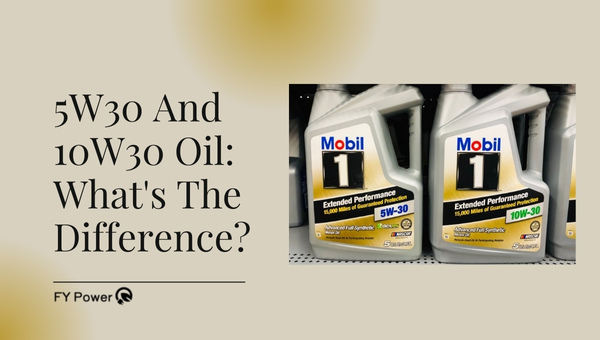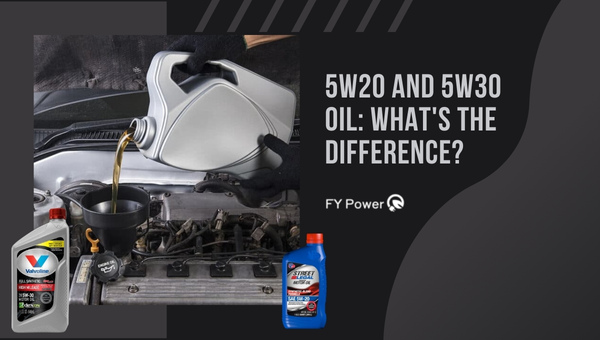What is the best wood to burn for heating your home efficiently? The answer is seasoned hardwood, specifically hickory, oak, ash, and hard maple. These dense hardwoods produce 24-30 million BTUs per cord, burn longer, create less smoke, and generate the most heat for your wood stove or fireplace.
Choosing the right firewood makes the difference between a warm, efficient fire and a smoky, frustrating experience. This comprehensive guide reveals which woods deliver maximum heat output, how to identify quality firewood, and the critical mistakes that waste energy and money.
Understanding Firewood BTU Ratings and Heat Output
BTU (British Thermal Unit) measures the heat energy in firewood. One BTU equals the heat needed to raise one pound of water by one degree Fahrenheit.
The best wood for burning heat produces high BTU ratings per cord. Denser hardwoods pack more energy into each log, creating sustained warmth with less frequent reloading. A cord of premium hardwood generates 24-30 million BTUs, while softwoods typically produce only 15-17 million BTUs.
Moisture content dramatically impacts heat output. Properly seasoned wood at 20% moisture burns efficiently, while green wood wastes energy evaporating water instead of warming your home.
| Wood Type | BTUs per Cord | Burn Time | Smoke Level |
| Hickory | 28.5 million | Very Long | Low |
| Oak | 27.7 million | Long | Low |
| Ash | 24.2 million | Long | Low |
| Maple | 25.5 million | Long | Low |
| Pine | 17.1 million | Short | High |
Top 5 Best Hardwoods for Maximum Heat
1. Hickory – The Heat Champion
Hickory reigns as what is the best hardwood to burn for maximum heat output. This dense wood produces 28.5 million BTUs per cord, burning hot and steady for hours. Its signature sweet aroma makes it popular for both heating and smoking meat.
Hickory’s exceptional density means longer burn times between reloads. The wood splits moderately well when green but becomes challenging once seasoned. Plan to season hickory for 12-18 months for optimal burning.
2. Oak – The Reliable Workhorse
Oak delivers consistent, long-lasting heat at 27.7 million BTUs per cord. Red oak and white oak both excel as firewood, though white oak’s tighter grain makes it more rot-resistant during storage. This makes oak one of the best firewood for heat burning available nationwide.
Oak requires patience, needing 18-24 months to season properly. Once dried to 20% moisture, it burns steadily with minimal smoke and excellent coal production. The abundant availability makes oak an economical choice for regular heating.
3. Ash – The Easy Starter
Ash wood offers the unique advantage of burning well even when slightly green. At 24.2 million BTUs per cord, it provides reliable heat with easy splitting and quick seasoning times of 6-12 months.
Many consider ash the most user-friendly firewood. It lights easily, burns cleanly, and produces minimal ash residue. The straight grain splits effortlessly, making it ideal for those processing their own firewood. For sustainable energy solutions beyond wood burning, check out FyPower’s guide to renewable energy.
4. Hard Maple – The Sweet Burner
Hard maple (sugar maple) generates 25.5 million BTUs per cord with a pleasant, subtle sweetness. This dense hardwood burns slowly and steadily, perfect for overnight fires in wood stoves.
Maple seasons in 12-18 months and splits moderately well. The wood produces excellent coals and minimal creosote when properly dried. Avoid soft maple varieties, which burn faster with less heat output.
5. Beech – The Consistent Performer
Beech provides 24 million BTUs per cord with excellent burning characteristics. Though it contains high initial moisture, properly seasoned beech burns hot and clean with attractive flames.
This hardwood requires 18-24 months seasoning due to its density. Once dried, beech splits easily and stacks well. The smooth bark and consistent burn make it a favorite among experienced wood burners.
Best Wood Burner for Fire: Matching Wood to Your Heating System
Different heating appliances perform best with specific wood types. Modern EPA-certified wood stoves achieve 70-80% efficiency with properly seasoned hardwood. Traditional fireplaces operate at only 10-20% efficiency, making wood selection even more critical.
High-efficiency stoves handle dense hardwoods exceptionally well. The controlled airflow maximizes heat extraction from premium woods like hickory and oak. Older stoves or open fireplaces benefit from mixing in easier-burning woods like ash or maple.
Consider your climate when selecting firewood. Extreme cold demands maximum BTU output from dense hardwoods. Milder climates allow flexibility with medium-density woods or shorter burning times. For additional home energy efficiency tips, explore FyPower’s energy-saving resources.
Woods to Avoid: Common Burning Mistakes
Softwoods and Resinous Woods
Pine, spruce, and fir contain high resin content that creates dangerous creosote buildup. These softwoods burn fast and hot initially but provide minimal lasting heat. The excessive smoke and sparking pose fire hazards in chimneys.
Cedar burns quickly with pleasant aroma but offers poor heat output. Save softwoods for kindling or outdoor campfires where creosote isn’t a concern.
Best Wet Wood to Burn – A Dangerous Myth
No wet wood burns well – this is a critical safety fact. Green or wet wood creates excessive smoke, minimal heat, and dangerous creosote deposits. Burning wet wood wastes 30% or more of potential heat energy evaporating moisture.
The sizzling and hissing from wet logs indicates wasted energy. Always properly season wood to 20% moisture content before burning. Invest in a moisture meter to verify dryness and protect your chimney.
Treated or Painted Wood
Never burn pressure-treated lumber, painted wood, or manufactured boards. These materials release toxic chemicals including arsenic, lead, and formaldehyde. The fumes pose serious health risks and corrode metal chimney components.
Stick to natural, untreated wood from known sources. Even driftwood contains harmful salts that damage stoves and create toxic smoke.
Best Wood to Burn at Low Temperature: Shoulder Season Options
During mild weather, you need controlled heat without overheating your space. Medium-density woods provide gentler warmth perfect for spring and fall burning.
Cherry wood offers moderate heat with beautiful flames and pleasant aroma. Birch ignites easily and burns brighter but shorter than dense hardwoods. Both work well for ambiance fires or taking the chill off cool evenings. Learn more about efficient home heating with FyPower’s generator guides.
Apple and other fruit woods burn slowly with delightful fragrance. Though lower in BTUs, they excel for shoulder season heating when maximum output isn’t required.
How to Identify and Store Quality Firewood?
Visual Inspection Tips
Quality seasoned firewood displays specific characteristics. Look for gray weathered color, visible cracks on cut ends, and loose or missing bark. The wood should feel lightweight for its size compared to green wood.
Fresh-cut wood shows bright color, tight bark, and heavy weight from moisture. Green wood lacks the checking (cracks) that develop during proper seasoning.
Proper Storage Methods
Stack wood off the ground on pallets or rails to prevent moisture absorption. Cover the top only, allowing air circulation on sides. Orient rows for maximum sun exposure and prevailing wind flow.
Store at least a two-week supply near your home for convenience. Keep the main woodpile 20+ feet from structures to discourage pests. Rotate stock using older wood first to maintain quality.
Moisture Testing
A moisture meter provides definitive readings for burn readiness. Test freshly split faces in multiple locations, aiming for 15-20% moisture content. Wood above 25% moisture burns poorly and creates creosote.
Without a meter, perform the sound test – dry wood makes a sharp crack when pieces strike together. Wet wood produces a dull thud. The bark test also helps – easily removed bark indicates proper drying.
Seasoning Timeline for Different Wood Types
Proper seasoning transforms green wood into efficient fuel. Split wood immediately after cutting to accelerate drying. Smaller splits season faster than large rounds.
Quick-Drying Woods (6-12 months):
- Ash
- Pine (not recommended for indoor use)
- Soft maple
Moderate-Drying Woods (12-18 months):
- Hard maple
- Hickory
- Cherry
- Birch
Slow-Drying Woods (18-24 months):
- Oak
- Beech
- Elm
Environmental factors affect drying times significantly. Hot, dry climates with good air circulation can reduce seasoning time by several months. Humid regions or shaded storage areas require maximum recommended times.
Safety Considerations for Wood Burning
Chimney Maintenance
Annual chimney cleaning prevents dangerous creosote fires. Professional inspection identifies damage or buildup before problems develop. Burn only dry, seasoned hardwood to minimize creosote formation.
Install carbon monoxide detectors on every level of your home. Never close dampers completely while fires burn. Maintain proper ventilation for safe, efficient combustion. For comprehensive home safety equipment, see FyPower’s portable generator safety guides.
Ash Disposal
Allow ashes to cool completely in a metal container for 48-72 hours. Never use plastic, cardboard, or combustible containers. Store the ash bucket on non-combustible surfaces away from structures.
Cold wood ash benefits gardens as a soil amendment. The potassium and calcium improve plant growth when applied sparingly. Avoid using ash from treated wood or trash burning in gardens.
Calculating Your Firewood Needs
Estimate seasonal requirements based on your heating patterns and climate. Full-time wood heating typically requires 3-5 cords annually in moderate climates, 5-8 cords in severe winters.
Calculate using this formula:
- Measure your average daily burn time
- Multiply by heating days per season
- Factor in your stove’s efficiency rating
- Add 20% safety margin for severe weather
Weekend-only burning or supplemental heat reduces needs to 1-2 cords yearly. Always stockpile extra for unexpected cold snaps or extended winters. Understanding your power needs extends beyond wood burning – explore FyPower’s battery wiring guide for backup power solutions.
Common FAQs About Firewood Selection
What Wood Creates the Most Creosote?
Pine and other resinous softwoods produce the most creosote, especially when burned slowly or with insufficient air. Wet wood of any species also generates excessive creosote due to incomplete combustion.
Can You Mix Different Wood Types?
Absolutely. Mixing woods optimizes burning characteristics. Start fires with easy-lighting woods like birch or ash, then add dense hardwoods for overnight heat. This strategy maximizes efficiency while conserving premium firewood.
How Long Does Split Firewood Last in Storage?
Properly stored firewood remains good for 3-4 years. After this time, wood begins losing density and BTU content through decomposition. Rotate stock using first-in, first-out principles for best quality.
Why Does Some Firewood Spark Excessively?
Moisture pockets in wood cause popping and sparking as steam escapes. Certain species like cedar and hemlock naturally spark more due to resin pockets. Always use a fireplace screen with sparky woods.
Making the Smart Firewood Choice
Selecting the best wood for wood burning dramatically improves your heating experience and efficiency. Premium hardwoods like hickory, oak, and ash deliver maximum heat output when properly seasoned to 20% moisture content.
Remember these key points:
- Choose dense hardwoods for maximum BTUs and long burn times
- Season wood properly – rushing this step wastes money and creates hazards
- Match wood selection to your heating needs and equipment
- Never burn wet, treated, or painted wood
Start planning next winter’s wood supply now. Quality firewood requires time to season properly, so buying or cutting in spring ensures ready-to-burn wood by fall. Your investment in premium, properly seasoned hardwood pays dividends through efficient heat, reduced maintenance, and safer operation all winter long.

